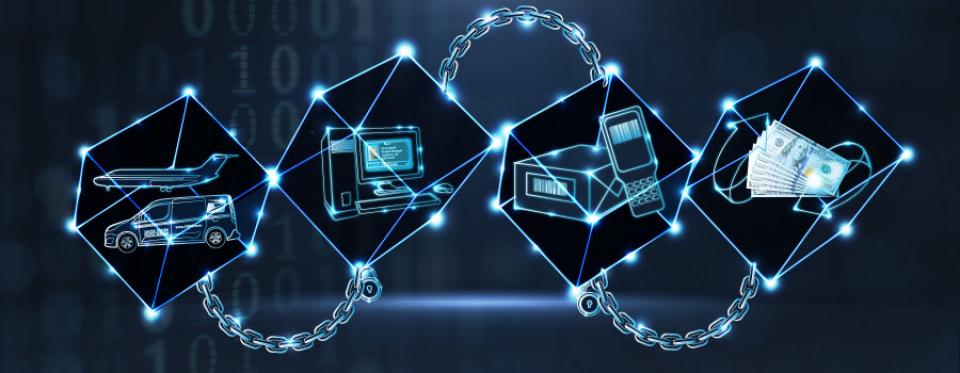Blockchain Technology: Possibilities for the U.S. Postal Service
May 23, 2016 (RARC-WP-16-011)
- Blockchain technology is a new way to transfer any kind of data or information in a fast, tracked, and secure manner without need for an intermediary.
- Major companies, such as Citibank and Australia Post, are beginning to research and experiment with this technology in order to provide new and more efficient services.
- The Postal Service could benefit from use of this technology – particularly regarding financial services, identity services, supply chain management, and device management – and should consider exploring and experimenting with it.
At its core, blockchain technology is a way to transfer any kind of data or information in a fast, tracked, and secure way without the need for an intermediary institution. Initially developed to allow peers to directly exchange digital currency faster and at lower cost, blockchain is now yielding a variety of promising new solutions beyond financial services. It is difficult to understand the full potential of these new applications at this formative stage, but they include property transfers, the execution of contracts, authentication services, device management, and records management.
Despite their novelty, these applications are beginning to gain traction with major companies and government entities, from Citibank and JPMorgan Chase to the Estonian government and Australia Post. These organizations are researching or experimenting with blockchain technology in order to keep better records and provide new and more efficient services.
The U.S. Postal Service Office of Inspector General contracted with Swiss Economics in order to better understand blockchain technology’s features and capabilities, as well as identify potential areas of interest for the Postal Service.
One major area is financial services. The Postal Service could use blockchain technology to improve the back-end of its financial products, such as international money transfers and money orders. A blockchain-based financial platform could digitize and streamline the services, making them faster and cheaper for both the Postal Service and its customers. In the long-term, blockchain technology could also be useful to the Postal Service in other areas such as identity services, supply chain management, and device management.
This paper takes an exploratory look at the technology and suggests that it may be wise for the Postal Service to explore and possibly experiment with blockchain technology in order to gain a better understanding of its potential impacts. The Postal Service could begin experimenting with financial applications and then naturally expand into other applications enabled by the technology.

